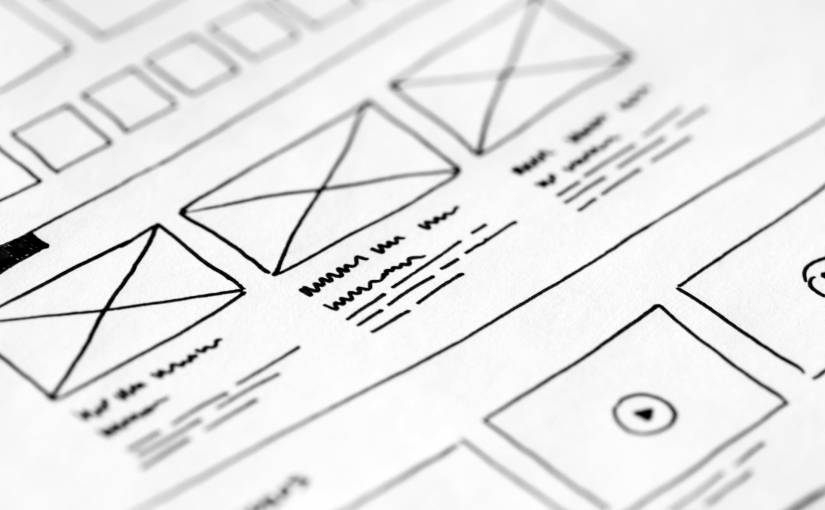Whether you’re a graphic designer or just an average web user, the world of web design is a fascinating one. But even acknowledged industry experts will be quick to wish you good luck predicting the future of web design.
Looking at websites from the late 1999s or early 2000s is like a blast from the past. The clunky interfaces, ugly fonts, and horrendous color schemes look objectively awful through our spoiled eyes. However, keep in mind that they were genuinely best-in-class designs for their era.
In 20 years, will we feel the same about the seemingly beautiful websites we enjoy today?
Somehow, I doubt that. But I do know that web design is set to evolve further and in some exciting and significant ways. So what exactly can we predict about the future of web design? And what makes predicting future web design changes so hard in the first place?
Why Making Predictions on the Future of Web Design is so Difficult
Let’s explore why web design predictions are so hard to make.
We don’t have a crystal ball that allows us to gaze into the future. The only way to predict web design trends is to look at historical patterns. After that, we can speculate about the variables that could influence web design and estimate how those influences could impact the future.
Even the best web design experts can only look a few years into the future. Beyond that, we simply don’t know what factors could be at play. For starters, consider the following four factors.
1. Technologies
In 2002, it would have been hard to predict that the future of web design would be governed by the fact that most people now access the web primarily with a mobile device.
Few tech experts could have predicted that mobile devices with internet access would become commonplace just a few years later. Future devices with internet access may enable us to browse the web in new ways. In that case, our web design fundamentals will necessarily shift.
Today, mobile devices demanded more flexible, responsive designs. Some future new technology could force us to rethink our previous principles. Obviously, we simply don’t know what those technologies could be.
2. Consumer Preferences
According to Website.design, another wrinkle is rapidly changing consumer preferences. In 2021, web users will strongly prefer minimalistic layouts, simplistic designs, and muted colors. It would be a bold/foolhardy prediction to speculate that this will eventually shift to favoring cluttered or manic designs. However, stranger consumer preferences have emerged in the past. When it comes to the aesthetic flavors of web design, we’re at the mercy of consumer attitudes — and consumers are notoriously fickle.
3. Major Events
Major world events can also impact web design, at least to an extent. Suppose there’s a radical shift in the government’s influence over the internet or a nationwide internet outage for a prolonged period of time. In that case, it could drastically change how we think about web design — and in unpredictable ways.
4. Push and Pull Factors
Sometimes, designs fall out of favor because they’re overused. Sometimes, new designs emerge simply because influential “cool” brands use them. Push and pull factors are complex and unpredictable, and even minor differences in small variables can add up to have a massive influence over how the future develops.
These four factors notwithstanding — and there are more — we can make at least some predictions about how web design will change in the near and distant future.
Streamlined Coding and Better Design Tools
First, we’ll definitely see improvements in how we can code and design websites from scratch.
Today, almost anyone can easily create a decent-looking website for free using one of several free (or cheap) website builders. These tools use WYSIWYG editors and simple modification widgets so that even amateurs can piece together a website from scratch.
In the future, this will likely become even easier and more accessible. Plus, experienced web designers and developers will probably gain access to even better suites of tools to support their work.
Responsiveness 2.0
One of the most significant leaps forward in web design was the introduction of “responsive” design, which forces elements to shift around based on the size of the device/screen viewing the webpage. But what if we could take this concept a step further? In the future, we could have the opportunity to interact with websites using a variety of high-tech devices, such as smart mirrors or projected interfaces from glasses we wear. Could our current web design adapt to these new types of layouts?
Conversational Designs
Customer engagement is essential for helping your brand grow. That’s why so many modern websites employ the use of chatbots and other forms of immediate user interaction when someone visits the site. In the future, we’ll see even more leaps forward in “conversational design,” enabling customized experiences and more interaction from the outset.
Personalization
Speaking of customization, there’s little doubt the future of web design will depend on greater personalization. Already, companies such as Google and Facebook do everything they can to track your online movements and better understand who you are — all so they can provide better customer experiences. What if you could offer radically different website designs based on the preferences and histories of the people accessing your site?
AR and VR
Augmented reality (AR) and virtual reality (VR) have been foretold as total technological game-changers. Unfortunately, they haven’t entirely caught on with mainstream audiences, but their time is coming. Once AR and VR become commonplace, users will expect dynamic interactive experiences from websites in these simulated worlds.
AI and Machine Learning
These days, AI engines and machine learning algorithms are already capable of learning from user engagements on the fly and making adjustments to serve those users better. Therefore, we could see better incorporation of these algorithms into websites in the future. This would allow them to dynamically adjust based on the actions of the people interacting with them.
Greater Security
Security has become an increasing priority for web designers and developers for many years. With hackers and cybercriminals constantly racing to improve their abilities, security experts will have their work cut out for them to keep pace. Obviously, the burden of security will fall more on backend coders and technical service providers than actual designers. However, the whole team will have to pull together to ensure web security.
Incredible Speed
Speed has always been a priority for web designers and developers. As a result, we’ll see better support for rendering, processing, and internet speeds in the future, opening up the door for web designers to get more experimental and include more novel elements in their designs. And, of course, users will benefit from faster loading times as well.
One-Page Websites
Recent trends have pushed web design toward minimalism and simplicity. Modern designers want users to scroll, rather than click. They want fewer elements and more streamlined layouts. In the future, this could evolve further, leading to the common development of “one-page websites,” where all necessary information is compiled in one central location.
Constant Evolution
My most confident prediction is that web design is going to constantly evolve.
There may be a handful of sudden, significant leaps forward. There might be periods of a few years where not much changes. But, for the most part, we’ll see a steady stream of new technologies. We’ll see unique consumer preferences and new cultural trends pushing for web design changes. Each year will see the onset of new trends, the death of old trends, and interesting new ideas that allow us all to progress.
If you’ve spent any time as a webmaster or a business owner with an important website, you know how hard it is to keep up with the latest web design trends. This is because web design principles change so quickly — and in such unexpected directions. But if you want to stay relevant and provide your users with the best possible experience, monitoring these trends is the price you have to pay.
Image Credit: picjumbo; Pexels; Thank you!


















